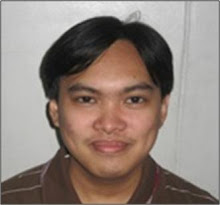Face detection has been at the forefront of image processing researches due to its application in various new technologies such as in security and communications. One of the problems in face detection is the changes in skin color under various illuminations. As a solution, Soriano et al. obtained the skin color locus and demonstrated its capability for adaptive face tracking [1]. In this report, adaptive face tracking is demonstrated on a video by performing color image segmentation per image frame. A skin locus is determined to be able to track the face under various illuminations.
The video is first parsed in image frames with downloadable software stoic video converter. Adaptive face tracking is implemented with Matlab 7. Color image segmentation is performed on each image frame. A region of interest (ROI) (see Figure 2) is cropped from the image frame (see Figure 1) and used as the reference for the skin color under a certain illumination.
The video is first parsed in image frames with downloadable software stoic video converter. Adaptive face tracking is implemented with Matlab 7. Color image segmentation is performed on each image frame. A region of interest (ROI) (see Figure 2) is cropped from the image frame (see Figure 1) and used as the reference for the skin color under a certain illumination.
The RGB color of the ROI is transformed into normalized chromaticity coordinates. Non-parametric segmentation is used to obtain the 2D histogram of the ROI. The skin color is tracked by histogram backprojection. See Reference 2 for a detailed discussion about color image segmentation. The segmented image is shown in Figure 3.
Morphological operations are performed on the segmented image to obtain the center of mass. The segmented image is first binarized by global thresholding using graythresh function (see Figure 4).
The binarized image is then cleaned with imclose function (see Figure 5).
The location of the center of mass represented by a red circle and a green bounding box are overlayed with the image frame (see Figure 6). To speed up the tracking, color image segmentation is only performed on the region of the bounding box for the next frame.
The tracked images under various illuminations are shown in Figure 7.
The RGB tracked images are then converted to a video using Windows Movie Maker. The video tracking results are shown in Figure 8.
Figure 8. Video Tracking Results.
I give myself a grade of 10 for this activity.
I would like acknowledge thirdy for lending me the images. I would also like to thank kirby for allowing the class to use his video.
References:
[1] M. Soriano et al., "Adaptive skin color modeling using the skin locus for selecting training pixels," Pattern Recognition 36, 681-690 (2003).
[2] M. Soriano, "Activity 12: Color Image Segmentation," 2009.
[3] M. Soriano, "A - Adaptive Segmentation and Tracking Using Color," 2009.
I would like acknowledge thirdy for lending me the images. I would also like to thank kirby for allowing the class to use his video.
References:
[1] M. Soriano et al., "Adaptive skin color modeling using the skin locus for selecting training pixels," Pattern Recognition 36, 681-690 (2003).
[2] M. Soriano, "Activity 12: Color Image Segmentation," 2009.
[3] M. Soriano, "A - Adaptive Segmentation and Tracking Using Color," 2009.








No comments:
Post a Comment